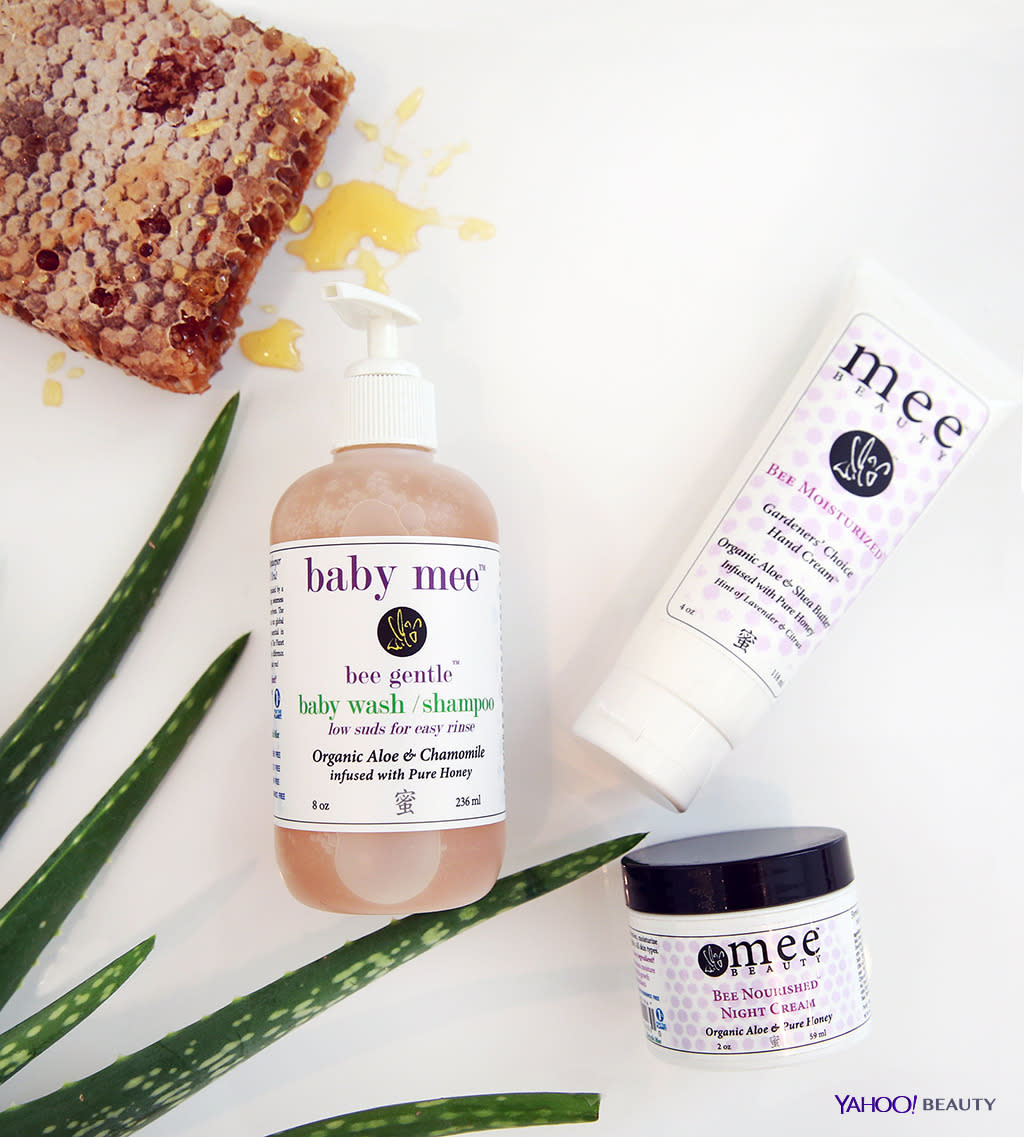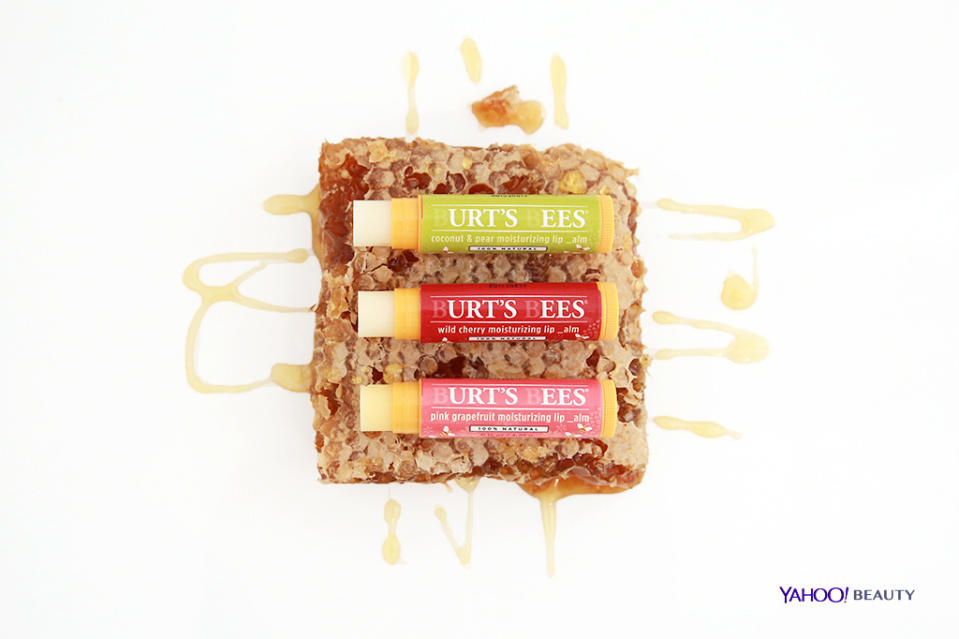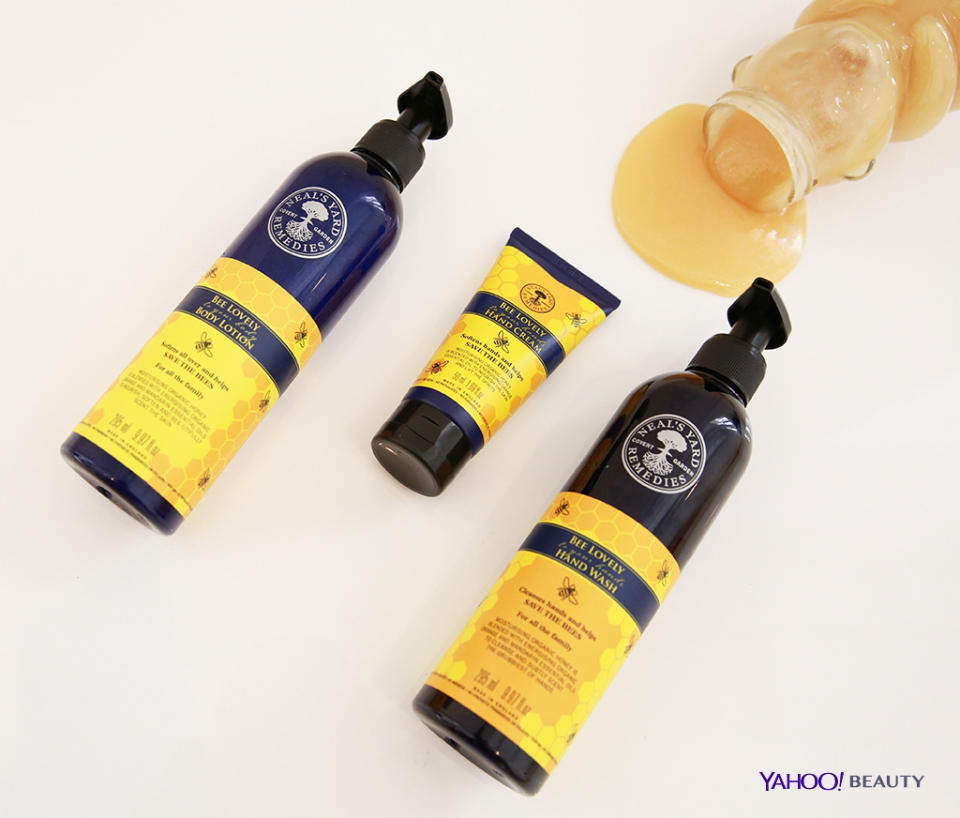Save the Bees With These Eco-Minded Soaps and Salves

Baby wash, hand cream, and night cream from Mee Beauty. (Photo: Nadeen Nakib for Yahoo Beauty)
When it comes to skin and hair products, honey, beeswax, and royal jelly are much-buzzed-about prized ingredients. But what about those endangered busy bees behind the goods?
Honeybees, as you may have heard, are in serious trouble. For about a decade now, they’ve been dying off at an alarming rate — upwards of 30 percent a year — due to a combination of pesticides (particularly a type called neonicotinoids), plus the parasitic varroa mite, climate change, and stress. And much of the latter, say experts, is caused by commercial beekeeping.
Related: Do We Really Need Gluten-Free Beauty Products?
“A pound of clover honey, the most common kind, represents the nectar from 8.7 million flowers, which gives some indication of just how hard they work for us. But honey is the least of the labor,” noted an extensive New York magazine article on the topic, explaining that bees pollinate crops representing about one in three mouthfuls of our food, from almonds to cauliflower. “In terms of agricultural value, their work as pollinators ranks bees between chickens and pigs.” And those bees are treated similarly — genetically manipulated, kept in unnatural living conditions, fed antibiotic-laced sugar water in place of their own overharvested honey, and artificially inseminated (and sometimes killed in the process).

Three special-edition lip balms from Burt’s Bees. (Photo: Nadeen Nakib for Yahoo Beauty)
“They live, almost exclusively, in what are called managed colonies, in hives we’ve built for them so that we might transport them around the country to industrial farms that need them for pollination,” the story continued. “Really, they are livestock.”
Related: These Beauty Product Companies Are Causing Deforestation, Says Eco Report
So how can you, beauty-product consumer, do your part to help — or at least be sure you’re not contributing to the hurt? While some people — particularly hardcore vegans, who shun any use of honey or beeswax — believe the best approach is to leave the bees be, you might choose to start by supporting one of a handful of beauty-themed efforts. The newest, Bring Back the Bees, is a campaign from Burt’s Bees that’s teamed up with actress Lea Michele.
“I was shocked to hear some of the staggering facts about how much the lives of bees are affected right now — and how the landscape of the food we eat could be greatly affected by the decrease in the bee population,” Michele told WWD at the campaign’s March launch.
As a way to help, the initiative will donate 1,000 wildflower seeds for every purchase of the brand’s three limited-edition lip balms ($3.29 each) — Pink Grapefruit, Wild Cherry, and Coconut and Pear, all of which would not exist without bees pollinating those fruits — to plant fields of bee-sustaining wildflowers alongside farmland. And rather than employing commercial beekeeping operations, Burt’s Bees sources its beeswax ingredient from wildlife preserves in Eastern Africa.

Body lotion, hand cream, and hand wash from Neal’s Yard Remedies’ Bee Lovely product line. (Photo: Nadeen Nakib for Yahoo Beauty)
“The collectors in these remote areas of Eastern Africa utilize a more natural and sustainable process that has been passed down through families for generations,” notes Burt’s Bees sourcing material. “Permits are obtained through the local authorities that manage protected land areas to allow responsible beekeeping on the land.”
Another, much smaller brand that’s gotten involved with the effort is Mee Beauty — offering a luscious collection of moisturizing lotions and cleansers (such as Bee Nourished Night Cream, $14.99), all made from the small-batch honey sourced from the beekeeping efforts of Ruth Harrigan.
“I do it the most natural way,” Harrigan tells Yahoo Beauty about her small-scale New York City beekeeping operation. “I think we should leave them alone — or at least mimic what they do in the wild. Their food is honey, so I do not and should not take more than I need.” That means not depleting the hives of honey they need to get through the winter and then resorting to a cheat that’s common among commercial beekeepers — feeding the bees with sugar water to keep them going.
“I was taught that way, but it didn’t feel right to me,” Harrigan says. “Beekepers should be taking the excess only.” In addition to using the bees’ honey sparingly, Mee Beauty donates 1 percent of all sales toward local beekeeping and bee-saving efforts.

Busy bees at Miraval Resort & Spa, in Tucson, Ariz. (Photo: Miraval)
Neal’s Yard Remedies Organic launched Bee Lovely Hand Cream ($15) back in 2011 as part of its save the bees campaign and, thanks to its success, has continued with a full Bee Lovely line — including body lotion, bath and shower gel, body butter, and all-over balm. A portion of product sales goes toward charities including Friends of the Earth and Biobees, with more than $65,000 raised so far. The brand has also been behind a major petition drive calling for the end of neonicotinoid pesticides in both the U.S. and the U.K. (where Neal’s Yard Remedies is based). The organic honey used in the Bee Lovely line is a blend of two types from Nicaragua and southeastern Mexico, both of which come from cooperatives that guarantee a fair price and sustainable market for the small-scale farmers.
Another collection of products that purports to save bees but could be a bit trickier to get behind is Gilchrist & Soames’s BeeKind line of shampoo, conditioner, shower gel, and body lotion — products that, while free of parabens and phthalates, are surprisingly full of commercially farmed honey from Wisconsin. A spokesperson tells Yahoo Beauty that this is because there are “standards for regulations” dictating that the large company use honey from a major supplier — but that the brand is “raising global awareness” about saving bees through its packaging, and is also in a financial give-back partnership with the Honey Bee Research Program at the University of California at Davis.
You might be best off pondering the whole sticky situation at the beloved Arizona spa Miraval, where a new beekeeping program launched this spring with a double goal: to raise honeybee-threat awareness through discussions (as well as hands-on visits to the beekeeping area) and to produce small-batch honey and beeswax for salves, lip balms, and luxurious, organic spa treatments.
“Everything we get from the hives will be used,” Miraval’s in-house beekeeper, Noel Patterson, tells Yahoo Beauty. “I put nothing in the hives, and it’s the highest quality wax you can get.” Patterson adds a warning: If you do use conventionally sourced wax, the beauty products will have toxins in them. “The wax’s purpose is to soak up the toxins — then the bees also go into conventional fields, so it’s a double whammy,” he says.
He also notes that overharvesting hives is not good for anyone. “The whole reason honey exists is to get bees through the winter,” he notes. “So if you take too much, the bees are going to die. This is true.” Here’s hoping we can stick with the products that keep them alive.
Let’s keep in touch! Follow Yahoo Beauty on Facebook, Twitter, Instagram, and Pinterest.



